While entomologists might hope that we select plants for our gardens based only on their value as bee resources, gardeners want attractive plantings. To bridge that gap, here are some suggested plant pairings for the bee garden that not only look good together but also provide complementary bee resources (i.e. one provides pollen and the other nectar) and have similar light and water needs.
Winter
Winter and early spring is when our native wildflowers shine. These re-seed easily, so a confined area like a parkway strip is a good place for them; sow seeds in late fall and let winter rains do the rest. If spread to other areas of the garden is a concern, pull these plants while they're still flowering before seeds are set. A great pair for full sun are California poppy (Eschscholzia californica) and phacelia (several species); orange and purple are complimentary colors and always look good together. A pair that can take some shade is Chinese houses (Collinsia heterophylla) and five spot (Nemophila maculata). Their purple and white flowers are an attractive combination; Chinese houses provides nectar and the five spot is a pollen source.
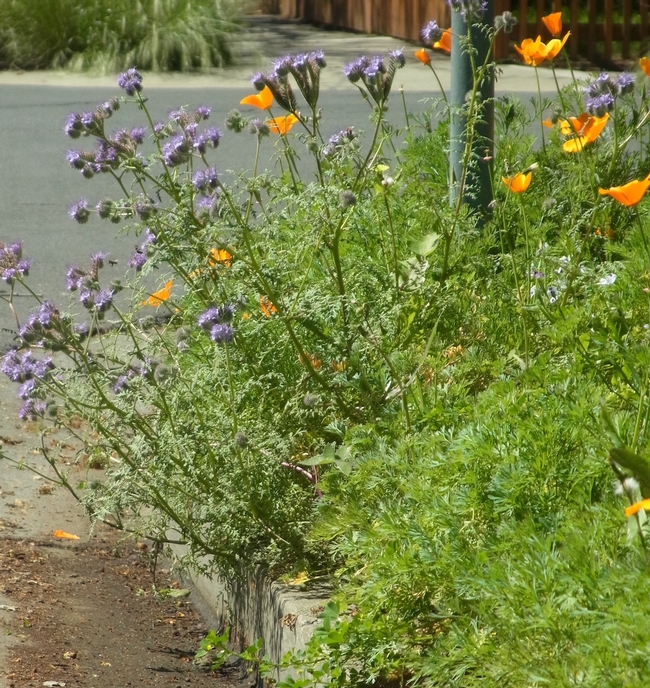
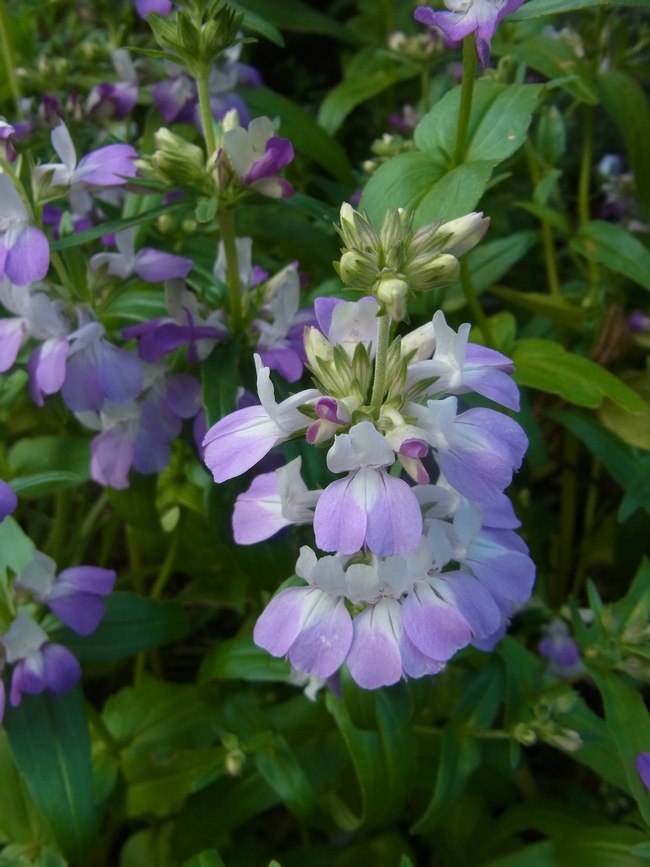
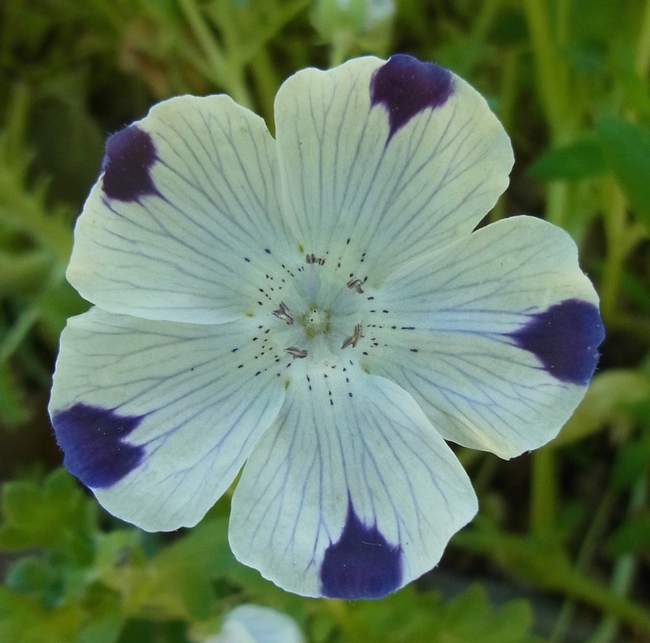
Spring
Honeywort (Cerinthe major 'Purpurascens') is an annual that provides both pollen and nectar. Be warned....it re-seeds with vigor! The Haven's plant is well-used by honey bees, and this year it was favored by a California bumble bee (Bombus californicus) queen. It's paired here with foothill penstemon (Penstemon heterophyllus), which covers the honeywort's sparse lower growth and provides nectar. Another spring combination are the California natives seaside daisy (Erigeron 'Bountiful') and California sunflower (Encelia californica). Yellow and purple are a pleasing combination and are colors that are attractive to bees. Both plants provide pollen and nectar.
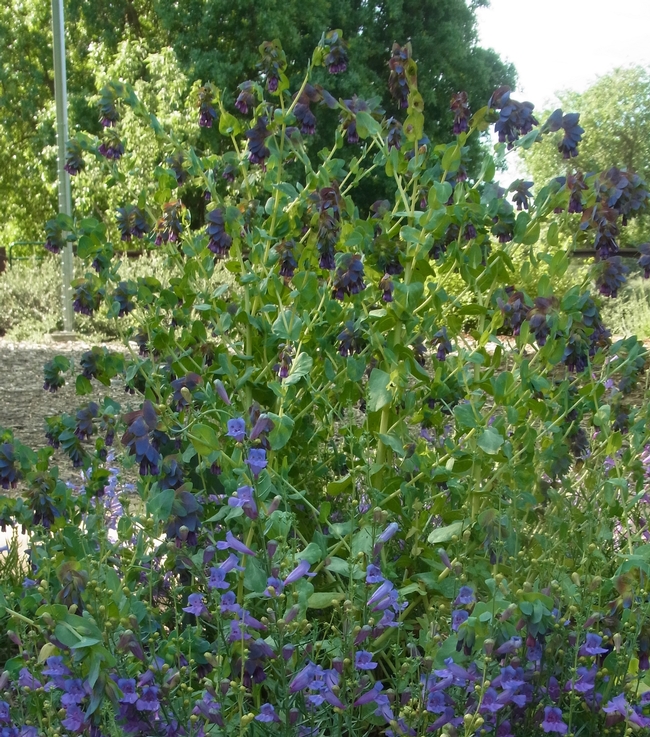
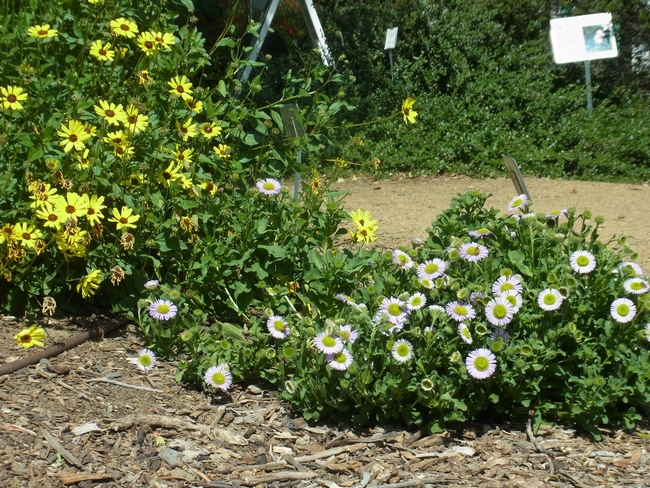
Summer
Yellows and purple continue into the summer. Yarrow 'Moonshine' is a classic Mediterranean garden plant that provides pollen; it's paired here with 'Purple Ginny' sage, but it works well with any of the autumn or little-leaved sages (which are nectar sources). Another summer combination is catmint (Nepeta x faassenii), which provides nectar, and the seaside daisy (Erigeron 'Bountiful'), which provides both pollen and nectar. Both will re-bloom with regular deadheading.
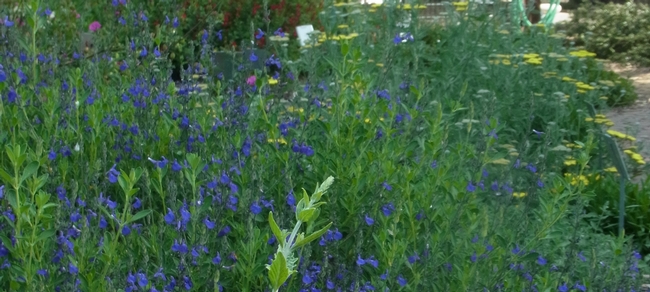

Fall
For fall bloom, another yellow and purple combination is bluebeard (Caryopteris x clandonensis) and goldenrod (several species/cultivars). Both are pollen and nectar sources that grow in part shade; goldenrod will spread over time so keep that in mind when selecting a planting location.
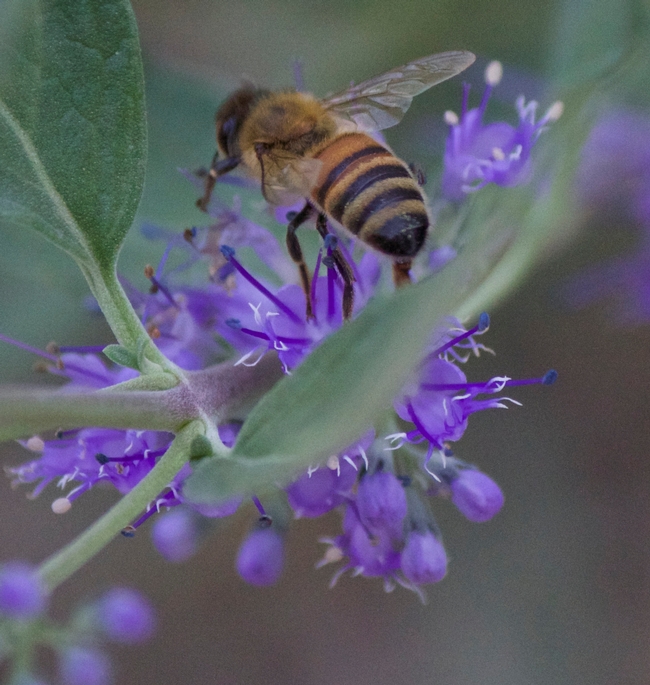
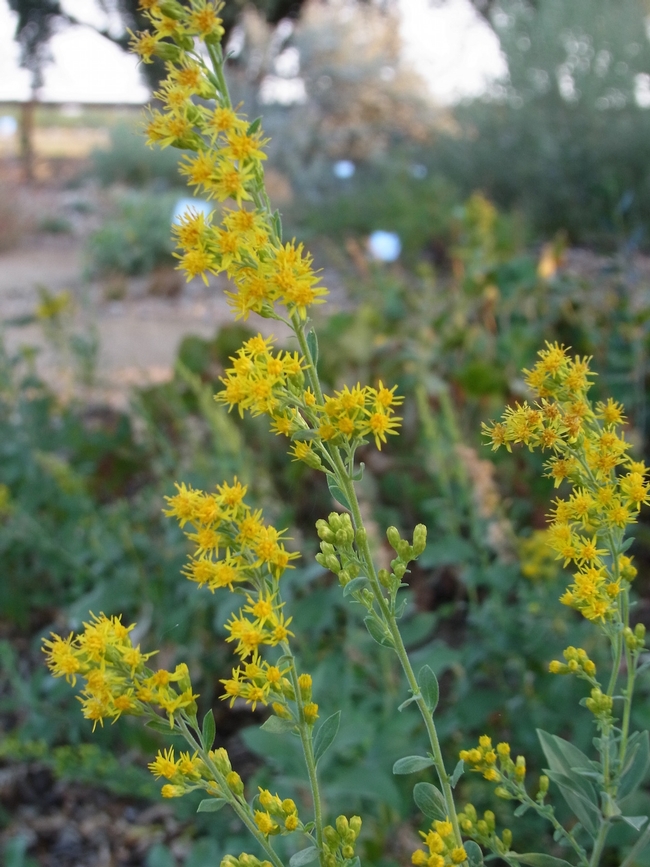
Happy planting!